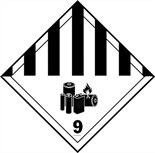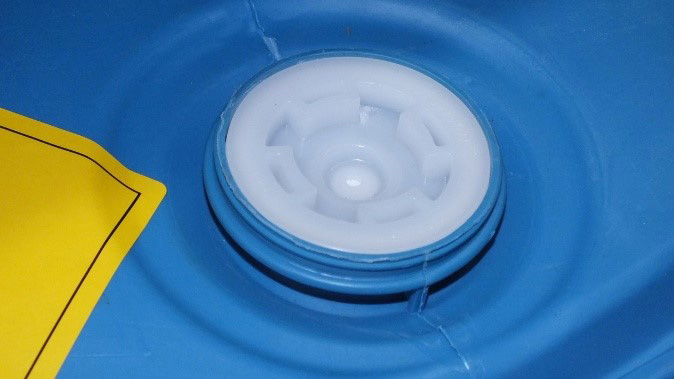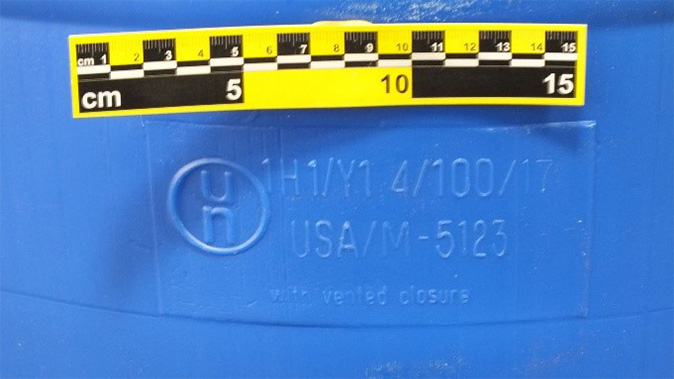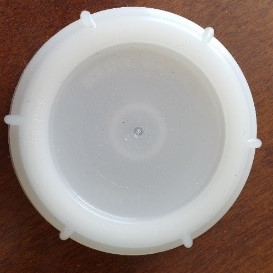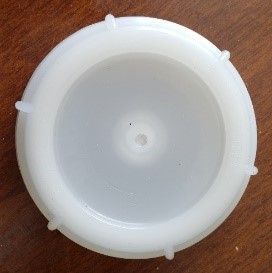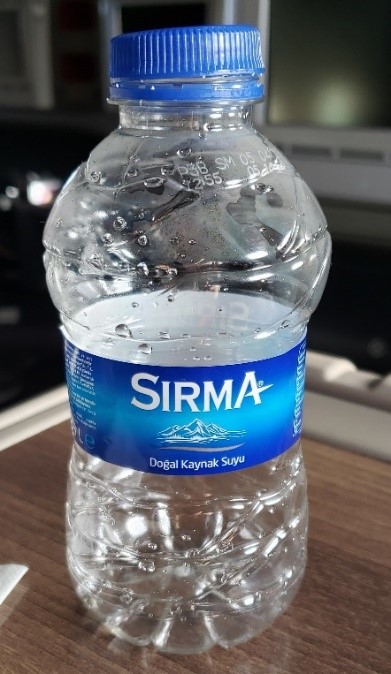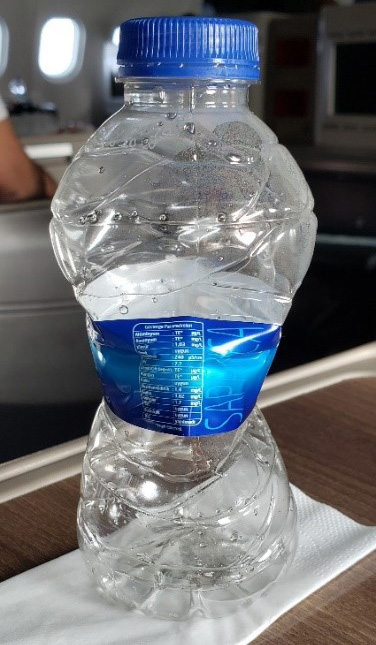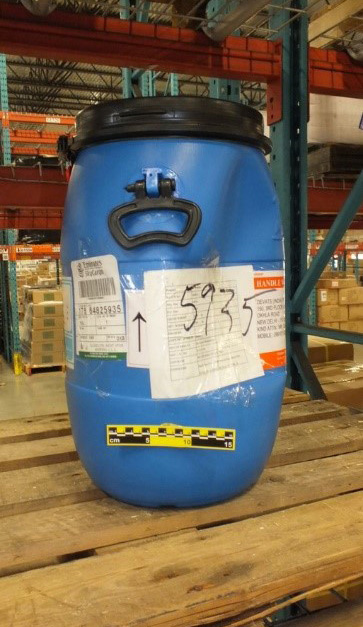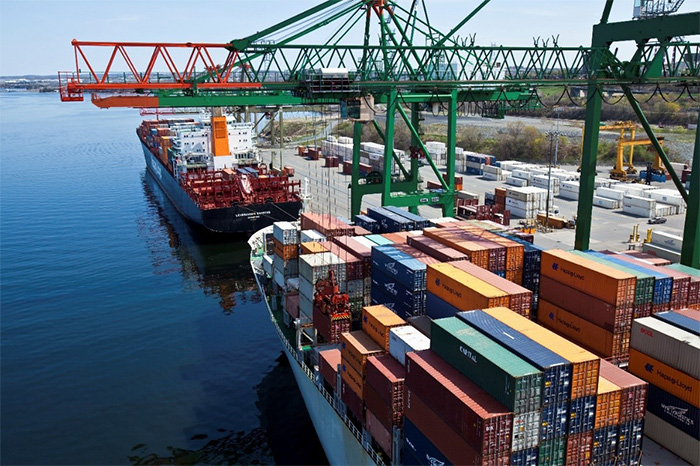We invite you to read the spring/summer 2020 edition of the Transportation of Dangerous Goods (TDG) Newsletter. This issue includes articles on the initiatives and activities of the TDG Directorate mainly focused on Transformation.
On this page
- Word from the Director General
- TDG transformation roadmap
- Regulatory sandbox on electronic shipping documents
- CANUTEC's continuous improvement exercise
- A new packaging performance standard for lithium batteries shipped by air
- What are the normal conditions of transport for dangerous goods by air?
- Risk assessment - Improperly declared dangerous goods at marine points of entry
- Recent scientific research publications
- In memoriam of Wali Sagaf
Word from the Director General
By Benoit Turcotte
I am pleased to introduce this edition of the Transportation of Dangerous Goods (TDG) Newsletter. The focus of this edition is Transformation and includes articles on our initiatives and activities.
Transformation is key to ensuring TDG remains as efficient and effective as possible to support its role as a world-class regulator that is agile, smart, and trusted. Modernizing our practices - based on the continuous and upcoming amendments to the TDG Regulations and TDG Act, and on a suite of ongoing and recommended initiatives - would enable TDG to innovate alongside industry and improve upon its ability to oversee the safe and secure transportation of dangerous goods.
Combined with this legislative framework, the contribution of Information Management and Information Technology (IM/IT) will also be foundational to the success of TDG's Transformation. As an example of this work, in order to carry out this suite of initiatives and align them with Transport Canada's (TC) broader Transformation Agenda, IM/IT will modernize and integrate our databases, which will allow for improved analyses and, subsequently, optimal inspections based on risk assessment.
In order to guide the implementation of initiatives that will favourably position TDG for future challenges, a Transformation Roadmap was developed; the Transportation of Dangerous Goods Directorate is currently in the process of implementing it. This Roadmap aligns with the five pillars of Transport Canada's Transformation Strategy, as highlighted below:
- data driven decisions: ensuring TDG has modernized IT systems to support decision making and risk-based oversight (e.g. data driven oversight and data sharing with provincial partners)
- intelligent programs and policies: adopting innovative approaches to modernize the way TDG provides services (e.g. Administrative Monetary Penalties regime)
- modern, inclusive workforce: using virtual tools and development programs (e.g. paperless office and remote inspections)
- service innovation: improving service through modernized fee structures (e.g. TDG fee modernization)
- transparency and public trust: promoting collaboration and information sharing between industry, provincial, federal, and Indigenous partners to promote greater awareness and compliance (e.g. Safety agreements with industry)
Successful collaborations during the COVID-19 pandemic
During these unprecedented times, the TDG Directorate continues to work hard to deliver quality services and information to its stakeholders in response to the COVID-19 pandemic. I am pleased with the successful collaborations our stakeholders maintained with the TDG Directorate while having to adjust to this new reality. I would also like to acknowledge the great work that is currently being done remotely. I am proud to say that the majority of TC's employees were able to switch to telework seamlessly. These achievements demonstrate that having a modern and inclusive workforce, which is an initiative that has been accelerated during the COVID-19 pandemic, make for a more agile way of working.
I hope you find some valuable information in this edition.
TDG transformation roadmap
By Veronica Ferrante and Andrea Howland
Now more than ever, Transport Canada (TC) recognizes the need to grow and adapt to rapidly evolving challenges and obstacles in an ever-changing transportation environment. To maintain its reputation as a modern and agile regulator, TC has developed a transformation vision for the TDG Directorate, comprised of a suite of initiatives that would enable innovation alongside industry and improve upon its ability to effectively and efficiently oversee the safe and secure transportation of dangerous goods.
The TDG Directorate is currently in the process of implementing its transformation vision and roadmap, which will ensure that we continue to remain:
Agile
- Proactive, anticipatory, and flexible, so we can respond quickly to changing needs across the TDG industry
Smart
- Collect and use relevant data, make risk-based decisions, and offer digital-first services to our stakeholders
Trusted
- Maintain our credibility by being open, transparent, and accountable to our stakeholders and with Canadians
The Directorate remains committed to advancing its transformation roadmap and will continue to work on key initiatives that contribute to modernizing the directorate in a way that encourages innovation, supports the economy, and continues to prioritize public safety. These initiatives include:
- a policy framework for a Client Identification Database, which was recently completed and will allow us to identify our regulated community
- a competency based training standard for Part 6 Training requirements that has been overwhelmingly approved by the Canadian General Standards Board (CGSB) committee members
- a remote inspections pilot project – an initiative which was accelerated in order to maintain oversight during the COVID-19 pandemic
- a Surface Indigenous Engagement Strategy, which is currently being developed in conjunction with TC Rail Safety colleagues to enhance communications with indigenous communities and address the concerns raised regarding the transport of dangerous goods through or near communities by rail
- a Reverse Logistics Policy, a TDG Grants & Contributions Program, and safety agreements with Industry (a voluntary audit program) – all of which are currently under development
We look forward to working with colleagues, partners, and stakeholders as we progress with our transformation goals. Through public consultation, we will look to our stakeholders for valuable input on these initiatives to gain meaningful and relevant perspective. This will help ensure that our program stays at the forefront of the safe and efficient transportation of dangerous goods.
Regulatory sandbox on electronic shipping documents
By Eva Clipsham and Laura Cortés
As the transportation sector evolves, Transport Canada (TC) is looking at how we can deal with regulatory barriers that could be hindering innovation and investment. As part of the Transportation Sector Regulatory Review Roadmap, the TDG Directorate is launching the TDG Regulatory Sandbox on Electronic Shipping Documents. This exciting pilot project will look at the feasibility and effectiveness of allowing electronic shipping documents in the TDG Regulations.
What's a sandbox?
The idea of a regulatory sandbox started in the United Kingdom. The sandbox is used as a testing ground for regulatory changes and will help us “get it right” before making any actual changes to the Regulations. We'll be using this sandbox to evaluate whether electronic shipping documents can give an equal or greater level of safety than paper shipping documents while also supporting TC's departmental goals of innovation, improved efficiency and providing greater flexibility for stakeholders.
The possible benefits of using electronic shipping documents include:
- better legibility and accuracy of information related to the shipment
- a simpler process for updating information on the shipping document
- a quicker way to share information with emergency first responders during an incident
- integrating shipping documents with other fully digital business processes
- bringing Canadian practices in line with other international regulations, like the International Maritime Dangerous Goods Code and the International Civil Aviation Organization's Technical Instructions, which currently accept electronic transport documents for international shipments
- more flexibility and a chance to help Canadian businesses be more competitive
Testing the idea
Despite all of these potential benefits, we can't overlook safety concerns or possible impacts on emergency response. As such, the purpose of this project is to do a thorough analysis of the impacts, costs and benefits related to using electronic shipping documents instead of paper ones.
This project will allow businesses to replace paper shipping documents with electronic documents, as long as they meet specific safety and information sharing criteria. Any business that wants to participate will need to complete an application form, and those who are approved will be given permission through an equivalency certificate.
In order for us to evaluate the operational feasibility of these electronic documents, we will also be doing targeted emergency simulations for various scenarios across Canada. These simulations will be done as both table top exercises (discussion-based sessions) and full-scale exercises (done on location, using real equipment to respond).
Both Canada and the United States (US) recognize the need to modernize paper-based requirements and consider electronic alternatives. We will build off the success of the US Department of Transportation's (DOT) pilot study that was conducted from 2011 to 2015 and will work closely with the US DOT to test whether electronic shipping documents will work for cross-border shipments.
Let's talk
On June 21, 2019, we launched our Let's Talk page to collect input from Canadians on the use of electronic shipping documents. Many Canadians supported the electronic option, since it could be a “functional, traceable and user-friendly process that will increase productivity, reliability and safety”.
Although the deadline for submitting comments was July 22, 2019 stakeholders are welcome to submit feedback at any time. At the moment, we're interested in feedback on various issues related to shipping documents, like current and developing technologies, impacts on emergency response, safety considerations, etc. All feedback we collect throughout this project will help inform future regulatory proposals.
In May 2020, the TDG Directorate officially launched the Sandbox pilot project to test electronic shipping documents for the transportation of dangerous goods. With the current COVID-19 pandemic, this pilot will play a vital role in testing alternative ways to support physical distancing and eliminating the exchange of physical documents in both daily operations and emergency response situations.
Some companies will be granted special permission to use electronic shipping documents instead of paper documents when transporting dangerous goods until spring 2022.
Our webpage on the regulatory sandbox allows you to:
- view the equivalency certificates issued to participating companies
- find the latest developments, including a notice to first responders explaining how to get shipping document information during an incident
We are still seeking participants and are also looking to expand our communication network amongst first responders, companies, and inspectors.
If you are a company that currently has the capacity to communicate shipping document information electronically, or you would like to partner with us to help publish content about electronic shipping documents on social media or internal newsletters, please contact us by email at TDGEShipping-ExpeditionETMD@tc.gc.ca.
To provide input or be added to our distribution list to receive project updates, please contact us By email at TDGRegulatoryProposal-TMDPropositionReglementaire.TC@tc.gc.ca.
CANUTEC's continuous improvement exercise
By Donna McLean
The Canadian Transportation Emergency Centre (CANUTEC) is run by the Transport Canada's TDG Directorate and supports Canada's emergency response community by providing valuable services to both first responder and local communities, including Indigenous communities.
As part of CANUTEC's Continuous Improvement Initiative, a third-party contractor ran an organizational SWOT (Strength, Weakness, Opportunities and Threats) assessment of its emergency services in the winter of 2018.
The assessment included completing online surveys and phone interviews with key stakeholders, including:
- Emergency Response Assistance Plan (ERAP) holders
- railways
- first responder training schools
- volunteer and Indigenous firefighters
Overall, the assessment found that stakeholders:
- have a good opinion of CANUTEC personnel and services
- consider CANUTEC a key service
- are happy with existing services and couldn't find a way that they didn't meet expectations
- value being able to speak with advisors who know about chemicals and give information in plain language
Stakeholders also want to see more promotion of:
- CANUTEC's services
- resources like the Emergency Response Guidebook (ERG)
- training packages that are available to help first responders with the ERG
Additionally, stakeholders also want more resources on issues like electric and alternative fuel vehicles, the effects of mixing chemicals, emerging trends and answers to common questions.
The assessment also highlighted areas where we could build stronger relationships with fire and emergency service training schools, as well as with Indigenous communities.
The findings from this assessment will continue to help us improve CANUTEC's services to first responders. Thanks to everyone that participated in this exercise!
A new packaging performance standard for lithium batteries shipped by air
By Ian Whittal P.Eng.
Because lithium batteries have a higher energy density than other battery types, they're considered “dangerous goods”. As dangerous goods, lithium batteries have strict rules under Canada's Transportation of Dangerous Goods Act, 1992 and under United Nations transportation recommendations.
Currently, when transporting lithium batteries by air the following rules apply:
- you can carry UN 3091 and UN 3481 lithium batteries inside of equipment, or packed with equipment
- if you pack UN 3090 and UN 3480 lithium batteries on their own, they can't be more than 30% charged
- lithium batteries not packed in or with equipment (UN 3090 and UN 3480) may be subject to reduced requirements if, they are limited to one package per consignment and per overpack
- presently, the International Civil Aviation Organization (ICAO) has prohibited the transport of lithium batteries as cargo on passenger aircraft:
- the performance-based packaging standard being developed by SAE International (SAE) (focused in automotive, automobile, aerospace and commercial vehicles), has been identified as one of the potential controls to establish an acceptable level of safety
Working together to create new standards
In 2016, regulators, pilots, packaging manufacturers, testing laboratories and shipping carriers began working together with SAE International to create a lithium battery packaging performance standard. The SAE G-27 committee is leading the development of this standard and deals with packaging safety and testing standards on how packaging can protect against the danger of shipping lithium batteries by air.
The SAE standard includes a test procedure that packages of lithium batteries must pass before they can be transported as air cargo. This standard is being developed in consultation with regulatory authorities, aircraft manufacturers, pilots, packaging manufacturers, battery manufacturers, testing laboratories and global shipping carriers.
The SAE standard will apply to lithium batteries classified as Class 9, Miscellaneous Dangerous Goods:
- UN 3090, Lithium metal batteries
- UN 3480, Lithium ion batteries
Putting new standards to the test
In 2017, Transport Canada (TC) tested the feasibility and efficacy of the SAE standard; this was done so that TC could develop evidence-based recommendations on how to improve the draft standard. TC identified areas for improvement on test methodologies in the SAE standard for several lithium battery types and sizes.
Performance testing lithium battery packaging
The packaging performance testing within the SAE standard consists of overheating one cell within a package of cells as prepared for transport, such that the single cell will undergo thermal runaway. A spark ignition source will be present within the chamber volume, capable of igniting vapours that reach a flammable concentration within the chamber. If the evolved gases ignite and/or the initiation cell induces further cells into thermal runaway where flames and fragments are not contained within the package, the package would be unsuitable for transport as cargo by aircraft.
TC will also be involved in the testing of batteries used in electric vehicles (and other large form batteries), to help decide on standardized testing practices.
TC will continue testing to further standard development until the SAE standard is approved, which is expected to occur in 2021. Once the standard is accepted and published, the Dangerous Goods Panel of ICAO will begin deliberations as to whether the SAE standard can keep lithium batteries safe, when transported as cargo in passenger carrying aircraft.
What are the normal conditions of transport for dangerous goods by air?
By Daniel Sylvestre
The environmental aspects associated with the transport of dangerous goods by air are different from those associated with surface transport. That is why the International Civil Aviation Organization (ICAO) defined the “normal conditions of transport'' under section 4.1.1.1 of the ICAO Technical Instructions for the Safe Transportation of Dangerous Goods by Air.
The “normal conditions of transport” are divided into four specific aspects:
Let's look at how these conditions affect the packaging and some of the other requirements for transporting dangerous goods by air.
Condition 1 – Temperature variations
As per part 4, introductory note 2 of the ICAO Technical Instructions for the Safe Transportation of Dangerous Goods by Air, during international commercial air transport, cargo can see extreme temperature ranges from –40°C to 55°C.
Since receptacles or packagings may be filled at low temperatures during Canadian winters and then exposed to much warmer temperatures when they arrive in tropical areas for example, the increase in temperature may tend to cause a discharge of liquid contents or the bursting of receptacles or packagings, unless a suitable ullage (liquid free space in a container) has been provided and the receptacles or packagings meet the prescribed pressure requirement.
Requirement # 1
When filling packagings for liquids, you must leave enough space to ensure that neither leakage and/or permanent distortion of the packaging will occur as a result of an expansion of the liquid caused by temperatures likely to prevail during transport. Liquids must not completely fill a packaging at a temperature of 55°C.
A shipper must be aware that temperature changes can affect materials. The extreme temperature changes during transport can cause materials like plastics to:
- soften significantly
- become brittle
- become permeable (allows liquids or gas to pass through it)
Requirement # 2
For plastic drums and jerrycans, rigid plastic intermediate bulk containers (IBCs) and composite IBCs with plastic inner receptacles, unless otherwise approved by the appropriate national authority, the period of use permitted for the transport of dangerous goods must be not more than five (5) years from the date of manufacture of the receptacles, except where a shorter period of use is prescribed because of the nature of the substance to be transported.
Condition 2 – Pressure variations
Due to altitude, the ambient pressure experienced by a package in flight will be lower than standard atmospheric pressure at sea level. Since receptacles or packagings will generally be filled at a standard atmospheric pressure of approximately 100 kPa, this lower ambient pressure will result in a pressure differential between the contents of the receptacle or package and the cargo compartment.
|
Cargo compartment |
Estimated pressure difference at cruising altitude |
|---|---|
|
Pressurized |
Up to 25 kPa |
|
Non-pressurized or partially pressurized |
Up to 75 kPa |
This difference in pressure tends to cause liquids to spill or the bursting of receptacles or packagings during flight unless each receptacle or packaging and its closures meet the packaging test requirements.
Requirement # 3
Packagings for which retention of liquid is a basic function must be capable of withstanding without leakage an internal pressure which produces a pressure differential of not less than 95 kPa (not less than 75 kPa for liquids in Packing Group III of Class 3 or Division 6.1).
Some packagings are equipped with a vent to allow the release of excess pressure during transport. These are often indicated on the packaging and the lids have a small hole to allow the pressure release. While this is certainly acceptable to allow the release of carbon dioxide when transporting UN 1845 CARBON DIOXIDE, SOLID or DRY ICE, this would not be acceptable if the dangerous goods have toxic properties.
Requirement # 4
Venting of packagings to reduce internal pressure, which may develop by the evolution of gas from the contents, is not permitted for air transport except as otherwise permitted in the ICAO Technical Instructions (i.e. UN1845 CARBON DIOXIDE, SOLID or DRY ICE).
Following the closure instructions is important when shipping by air. If a packaging is not closed properly on the ground, by the time the aeroplane reaches cruising altitude it will try to reach a pressure “equilibrium” by releasing the excess air. During the descent, the outside pressure will try to re-enter the packaging but, in most cases, it will close the packaging, preventing air from entering and will result in the packaging being crushed.
This principle can be easily demonstrate by bringing a water bottle on your next flight and after drinking it, closing it. By the time the airplane lands, the bottle will show signs of being crushed by the outside pressure. This situation also applies to packaging found in air cargo facilities.
Condition 3 – Vibrations
Packages in commercial aircraft can be exposed to vibrations ranging from: 5 mm amplitude at 7 Hz (which equals 1 g acceleration) to 0.05 mm amplitude at 200 Hz (which equals 8 g acceleration).
These vibrations can result in the contents of packaging being released if it was not closed in accordance with the closure instructions.
Requirement # 5
The body and the closure of any packaging must be constructed in a way that allows it to adequately resist the effects of temperature and vibration occurring in normal conditions of transport.
The closure device must be designed so that it:
- is unlikely that it can be incorrectly or incompletely closed, and must be such that it may be checked easily to determine that it is completely closed; and
- remains securely closed during transport.
Condition 4 – Humidity variations
Humidity is the concentration of water vapour in the air, which is usually invisible to the human eye. During air transport there are humidity variations. A flight might leave a low humidity environment and land in very humid environment. In addition, the presence of fruits and vegetables in the cargo compartment may, during the flight, create a high humidity environment which may negatively affect the dangerous goods packaging in the same cargo compartment.
Summary
In short, when shipping dangerous goods in a UN Packaging by air, you must ensure that:
- when filling packagings for liquids, there is enough liquid free space (ullage) to allow for changes in volume due to temperature variations
- plastic drums and jerrycans, rigid plastic IBCs and composite IBCs with plastic inner receptacles, they were manufactured less than five (5) years ago
- when shipping liquids, the packaging can withstanding an internal pressure which produces a pressure difference of not less than 95 kPa
- you are not using a packaging allowing “venting” of excess pressure unless specifically allowed in the packing instructions
- you must ensure that the packaging is closed as per the “closure instructions” from the manufacturer
Risk assessment - improperly declared dangerous goods at marine points of entry
The Transportation of Dangerous Goods Directorate is doing a risk assessment to better understand the issue of dangerous goods entering Canadian marine ports without being properly declared by foreign shippers. When dangerous goods are misdeclared or undeclared, they may not be packaged or stored in a safe manner. This can lead to explosions or fires at warehouse facilities or at sea, which may result in significant damage to property, injury or loss of life.
The risk assessment was launched in November 2017. It included feedback sessions with stakeholders and looked at the risks to the transportation system, public safety and first responders. A report based on the findings of these sessions was completed in May 2019 and recommended that we collect more data, set up awareness and education sessions with stakeholders, and increase cooperation with the Canada Border Services Agency. An action plan for key recommendations is being developed.
Recent scientific research publications
Within the TDG Directorate, the TDG Scientific Research Division has the responsibility to plan, manage and deliver engineering and scientific research, with the objective of informing and contributing to the improvement of public safety during the transportation of dangerous goods. This research is done in accordance with section 25 of the TDG Act.
In an effort to disseminate its research to a wider audience, the TDG Scientific Research Division publishes abstracts for completed research projects on the TDG website.
Since April 1, 2019, abstracts for the following reports have been published:
|
Abstract title |
Description |
|---|---|
|
Crude Oil Equation of State |
This report describes the development of a computer model that can predict crude oil properties at high temperatures. The report also describes how the model can be used to predict how crude oil behaves in closed containers exposed to fire conditions. |
|
Task 3: Combustion Experiments and Modeling |
This report describes an experimental study of physical, chemical, and combustion characteristics of selected North American crude oils, and how these characteristics associate with thermal hazard distances resulting from pool fires and fireballs. |
|
Strength, Creep, and Toughness of two Tank Car Steels |
This report summarizes the results from laboratory tests conducted between 2016 and 2018. These tests are intended to collect data on the properties of two conventional tank car steel types: TC 128B and A516-70. |
|
Effectiveness of Mercury Spill Remediation Techniques |
This report details a study that was done to assess how effective two mercury spill treatments were at limiting mercury vapour formation. |
|
Assessment of the Environmental Conditions for Lithium Batteries Shipping |
This report assesses the conditions lithium batteries and cells experience in transport, by shipping several instrumented packages around the world. The packages logged environmental & physical conditions (temperature, pressure, humidity, shock and vibration) during transport. |
The abstracts listed here, along with other research abstracts in the past 5 years, are available for reading on the Transportation of dangerous goods publications.
The TDG Scientific Research Division can provide a copy of all published reports upon request: TC.TDGScientificResearch-RecherchescientifiqueTMD.TC@tc.gc.ca
In memoriam of Wali Sagaf
Ask anyone in the Transportation of Dangerous Goods Directorate “What word best describes Wali Sagaf?” and inevitably, you will receive more than one response: kind, compassionate, witty, joyous, warm, inclusive, generous, respectful, patient, tactful, and professional. All of these qualities and many more exemplified Wali, our beloved friend and colleague who passed away on Thursday, April 23, 2020. Wali Sagaf was a chemical engineer and obtained both his Bachelor's and Master's degrees from the University of Ottawa. He worked at Natural Resources Canada as an explosives inspector prior to his arrival at Transport Canada in 2015.
Wali greatly enjoyed collaborating on projects with a wide variety of individuals; he respected different perspectives and opinions, valued what each person brought to the table, and took pleasure in delivering results achieved through teamwork. Without fail, he displayed professionalism and diplomacy in his interactions with internal and external colleagues and clients alike. Some of Wali's notable projects included the development of the 2018 TP14877 tank car standard; updating Part 5 of the TDG Regulations; developing a standard for the packaging of explosives; and his meaningful contributions to the Standard Oversight Committee, notably where he established a standards development process dubbed “Wali's Wheel” by our Director General, Benoit Turcotte.
Wali enriched and enlivened the workplace in many ways, whether by simply flashing his dazzling mega-watt smile, fashioning a “Boss Stick” (a magic wand conferring the balance of power to colleagues in Acting roles), or bringing his favourite SconeWitch treats to meetings. He was the hub of the 16th floor kitchen, where he had a knack for looping everyone into whatever discussion was taking place over the lunch break, no matter the topic. He never missed an opportunity to spread joy, not only to his immediate colleagues, but to anyone he came across in the workplace.
Wali was always very active in the planning of TDG social activities, with Halloween and holiday-themed activities being his favourites. He made sure each member of his team received a Candy-Gram at Halloween. He hosted the Engineering team at his home during the Christmas holidays, and went out of his way to make sure everyone felt welcomed and was having a good time. His teammates tell countless stories of their travels with him and the merriment that would ensue. One particularly amusing anecdote recounted Wali and a co-worker driving through Vancouver headed to an inspection, when Wali texted a local radio deejay who had asked listeners for song requests – within minutes, the deejay announced on-air that Wali Sagaf was in town, to the amazement of his travelling companion! He seemed to have friends everywhere, no matter where he journeyed. One of his top travel destinations, for work or play, was the city of New Orleans.
Away from the office, Wali was extremely sociable, and he had a wide array of interests, such as attending Vanier Wrestling matches, taking in craft beer festivals, camping, and watching the annual Eurovision song contest.
Wali was an enormously well-respected member of Ottawa's LGBTQ2 community. He was very proud to attend the first Public Service of Canada Pride event held in summer 2019. He dressed up, constructed a poster, and walked to the parade accompanied by his team. He was also very encouraged that Transport Canada had taken the initiative to deploy positive space awareness sessions across the department, and believed it was a good starting point for discussions surrounding LGBTQ2 issues.
Wali will be missed more than he could ever know. His joyful spirit and sweet, irreplaceable nature will be kept alive and well in the wonderful memories of everyone who knew him, both within the Engineering Services family, and beyond.
Those who wish to make a donation in Wali's memory can do so through the LGBTQ2 organization MAX Ottawa, an organization chosen by his family. To learn more and donate, please visit their website.

